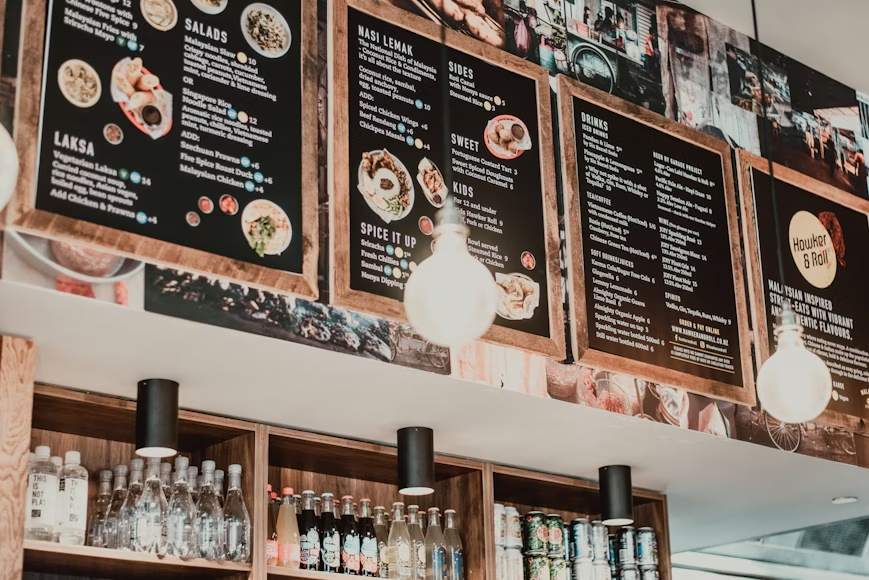New legislation became law on the 6th April regarding the listing of calorie information on restaurant menus. So, what does this mean for the UK hospitality sector? Marc Bertorelli, who has spent his entire working life in the hospitality sector, and is now the Business Development Manager of hospitality accountancy specialists Paperchase explains in detail what the new law means.
It is estimated that overweight and obesity related conditions across the UK costs the NHS £6.1 billion each year. Almost two-thirds (63%) of adults in England are overweight or living with obesity, whilst 1 in 3 children leave primary school overweight or obese.
As a result, on 22nd July 2021, UK Parliament passed legislation making it compulsory for restaurants, cafes and take-aways to print calorie labels on menus. These measures, which now form part of the government’s wider strategy to tackle obesity, will be expected to ensure people are able to make more informed, healthier choices when it comes to eating food out or ordering takeaway food into their homes.
Now, in April 2022, this legislation becomes law and larger restaurants, cafes and takeaways in England will need to display calorie information for customers at the point of choice.
Business Scope
The requirement extends to any business with 250 or more employees which offers non-prepacked foods and soft drink items suitable for immediate consumption by the purchaser. The legislation requires that the new information be displayed on physical menus, online menus, and food delivery platforms and will need to report the calorie values of those foods.
The types of businesses covered by this requirement include:
Restaurants, fast food outlets, cafes, pubs, and supermarkets
Home delivery services and third-party apps selling food that is within this scope
Cafes and takeaways within larger shops and venues such as supermarkets, department stores and entertainment venues such as cinemas and theatres
Specialist food stores, delicatessens, sweet shops, bakeries, and farm shops
Contact catering for events and field canteens
Domestic transport businesses, including aeroplanes, trains, cruise ships and ferries
To date, this legislation does not apply to small restaurants, cafes and takeaways, or hospitality businesses in Scotland, Wales, and Northern Ireland.
Franchise Businesses
Franchisees carrying out business under a franchise framework agreement where the sum of the overall franchisees in the franchise group exceed 250 or more employees, will be seen and considered as qualifying. It will be the responsibility of the business selling the food, the franchisee, to ensure the calorie information is displayed in accordance with the regulations.
Where the franchising agreement does not cover common foods across the franchise network, and only covers the provision of alcoholic drinks, as in the case of a pub franchise, a franchisees business is not thought to be part of the franchisors for the purpose of determining whether it is a qualifying business
Online Food Sales
The requirement extends to foods sold on a website or on a mobile application, including third party delivery services such as Just Eat and Deliveroo. Where food in scope of the regulations is sold on a website or mobile application, the business responsible for that website or mobile platform (the remote provider) is then responsible, irrespective of the size of that business, and is then registered to display the calorie information offered for sale by the qualifying business.
Mass Catering
Calorie labelling is not required in certain establishments when food is provided ‘in house’ such as a staff canteen. However, where food is provided by another organisation, with 250 or more employees, such as a large contract caterer, then calorie information must be displayed. The following establishments qualify:
An educational institution for students over 18 years old
A military establishment
Prisons
Hospitals or other medical institutions
Care home or other institution providing social care
A workplace canteen
Qualifying Foods
Qualifying foods include:
Foods offered for sale in a form where it is suitable for immediate consumption
Non prepacked foods
Not exempt foods
Exempt foods include:
Unprocessed products consisting of a single ingredient, such as fish, meat, and cheese, where those products are not added to other ingredients or foods such as with breads or baguettes
Fresh fruit and vegetable, provided those ingredients are sold separately and do not form the part of a recipe and are not added to another dish consisting of more than one ingredient
Exempt foods for particular audiences:
Exempt food for particular audiences includes food that is provided by a charity in the course of its activities which is – free, or for a price which is less than the cost of providing the food, or on behalf of a charity at an event to raise funds
Food provided at an educational institution where the pupils are under 18 years old
Food provided ‘not for payment’ to patients of a hospital or other medical facility
Food served by the armed forces to members of the armed forces outside of a military canteen
Food served on an international train, aircraft, ship, or ferry, to or from a country that is not part of the UK
Other exemptions:
Foods which appears temporarily on a menu for less than 30 consecutive days and no more than 30 days in any one year
Alcoholic drinks over 1.2% ABV
Condiments which are provided to be added by the consumer to the food
Restaurants, cafes, and takeaways will be allowed to offer a menu without calorie information upon request. However, menus with calorie details should still be offered by default.
Menus in restaurants, cafes and take-aways with over 250 employees will also have the message that “adults need on average around 2000 kcal a day.” This guidance is not in line with NHS guidelines, which state that the ideal daily intake of calories varies depending on age, metabolism, and levels of physical activity, among other things, men need around 2,500 calories a day and women need around 2,000 calories a day.
Displaying Calorie Information & Calorie Content
Businesses selling food in scope of this regulation must:
Display the energy content of the food in kilocalories (Kcal)
Reference the size of the portion of food to which the calorie information relates, for example per 100g
Display the statement that ‘adults need around 2000 kcal per day’ which is seen as the ‘statement of daily calorie needs’
Where food is chosen from items on display, or on a shelf, the calorie information must be displayed in apposition where it can be readily seen by anyone choosing that food item
Calculating Calorie Content
The calorie content displayed should be calculated using the conversion factors listed in Annex XIV of the Retained EU Regulations 1669/2011 on the provision of food information to consumers and should be average values based on:
The manufactured analysis of the food
A calculation from the known or average values of the ingredients used
A calculation from the generally established and accepted data which in the UK is refers to the McCance and Widdowson’s Composition of Foods dataset
Tools
A number of menu planning tools are already on the market that will help hospitality businesses to manage this process. One such tool is MenuCal, which can help food businesses comply with legal requirements to manage and record allergen information. It can also be used to calculate the amount of energy in food and drink on the menu. Developed for food businesses in Northern Ireland, MenuCal is a free, practical, and easy to use tool. It can be accessed online using a computer, tablet or phone and stores information safely and securely.
Penalties
The penalty for noncompliance by a qualifying business may result in a enforcement officer serving an improvement notice. However, any person who fails to comply with an improvement notice is guilty of an offence and may be served with a fixed monetary penalty (FMP) of £2,500 as an alternative to criminal prosecution.
Benefit to the Hospitality Business
Calories have been disputed as an accurate way of determining how ‘healthy’ our diet is. It is very difficult to estimate how many calories any one person needs as so many factors can influence this, something that a universal recommended daily calorie intake does not consider. As a food business, one should base your meal plan on the medical advice that you have received, not general Government guidance.
There are three main benefits to hospitality to putting energy information on the menu:
It can help food businesses increase profit due to standardisation of recipes and reduce food waste
It can give businesses a competitive edge – current food trends point towards a rise in demand for healthier foods and products
It’s what consumers want – with research showing 89% of people would like to see more information about healthier options when eating out (FSA, 2021)
For More Information
Marc Bertorelli comments, “Paperchase provides hospitality businesses with practical insights, solutions and support, every day of their working life, from conception, to opening, through to expansion. Supporting operators confronting the challenges of creating, growing, and maintaining a successful business, if you need help implementing the new legislation regarding calorie information labelling, or any other issue, Paperchase can help.”
About the author:
Marc Bertorelli gained a BSc (Hons) in International Hospitality Management from Oxford Brookes University, following which, he has worked front-of-house with many illustrious establishments, including the London Mandarin Oriental, the Michelin stared ‘The Foliage’ and the Savoy. Marc is now Business Development Manager of Paperchase, the UKs leading hospitality accountancy and business improvement specialists.
Marc Bertorelli can be contacted on:
M: 07545 922908 E: [email protected] W: www.Pchase.co.uk
Read more


